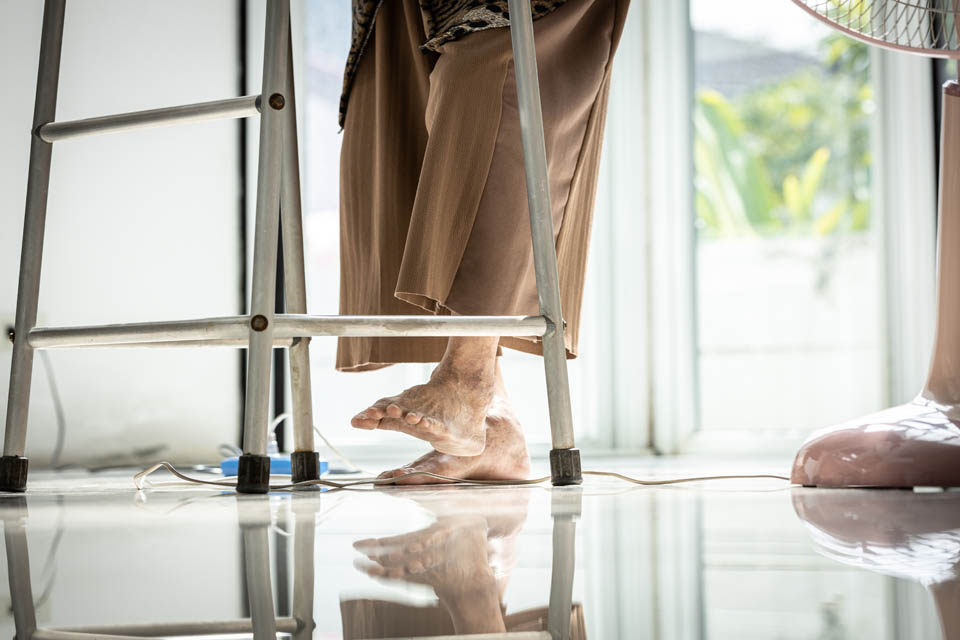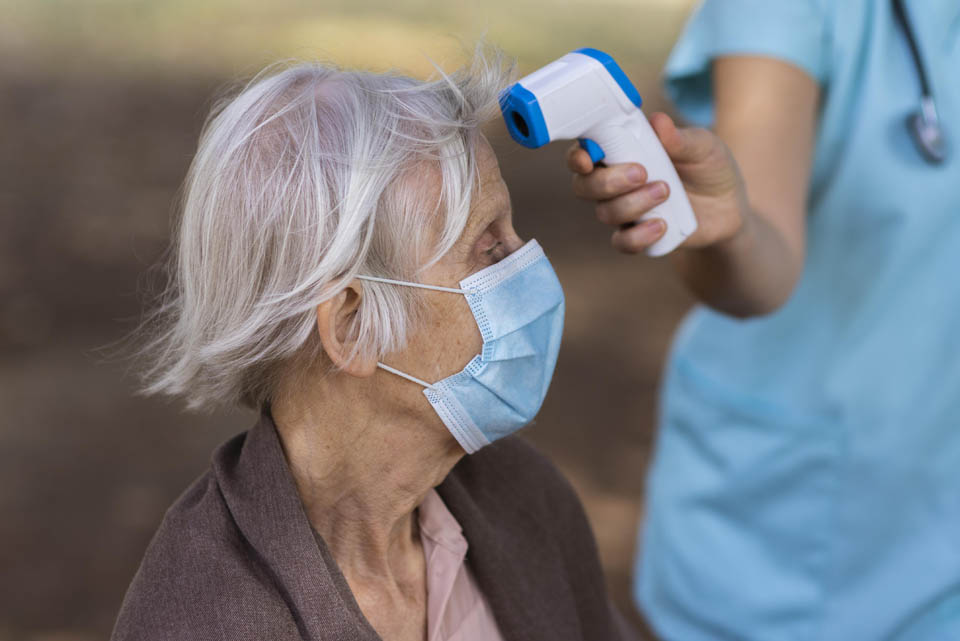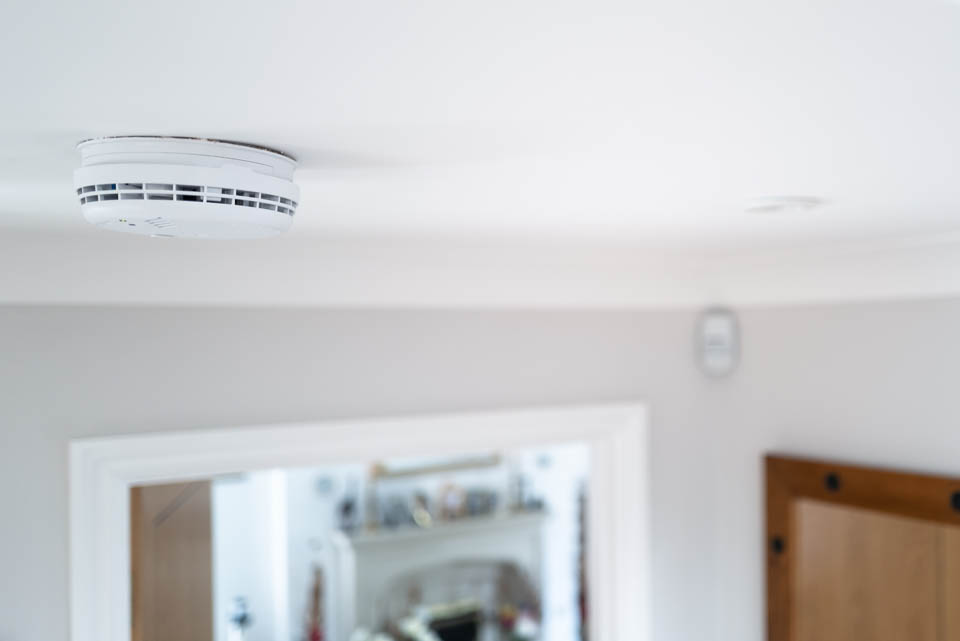Direct client care in a home-based environment can involve hazards and risks that are different from those in the workplace.
The home environment will not have the design, risk and infection controls, emergency management and security precautions that are part of the design of health and other care facilities.

Image by CGN089, Shutterstock, Shutterstock licence
 Reflect
Reflect
In a home-based work environment, the person receiving care has a right to choose how they live and behave in the safety of their own home.
Do case workers have to provide support in an unsafe home-based work environment?
Record your thoughts in your digital device.
Rights and responsibilities of workers and clients
Under WHS legislation, workers and clients have the right to be safe and free from harm and the responsibility to ensure others are safe.
You have a legal responsibility to take reasonable steps to keep yourself and other people safe. In a community services or healthcare situation, ‘other people’ can be clients, their family, visitors and co-workers.
Safety includes ensuring physical safety and psychological or emotional safety. When workers commence employment,
their induction must include information about the organisation’s WHS policies and procedures and their WHS
obligations.
 Record your thoughts
Record your thoughts
Document your thoughts to each of the questions presented. When you have finished, select 'Create Document' to export your content and keep for later.
Challenging behaviours
Some people live with conditions and stressors that impact the parts of the brain that affect mood, self-control and inhibition. These can cause people to act in socially unacceptable ways, such as yelling and screaming for no apparent reason or being physically aggressive.
These behaviours are often a form of communication. The person may not know how to communicate their feelings or needs in any other way. With the support of your supervisor, strategies can be developed to manage these risks and prevent harm to yourself or others.
If you feel that your personal safety is at risk at any time during your workday, you need to tell your supervisor immediately.
 Research to learn more
Research to learn more
Read more about challenging behaviour or behaviours of concern for people living with disability and people living with dementia.
 Case study
Case study
This case study follows a mental health support worker who becomes increasingly unsafe while at work.
Eli is employed as a mental health support worker. He is currently working with Brian, an army veteran diagnosed with post-traumatic stress disorder (PTSD).
Brian experiences mood swings, anxiety, and depression as a result of his PTSD. In recent months, Brian’s behaviour towards Eli is increasingly unpredictable and he is becoming more verbally abusive to Eli. Brian sometimes makes derogatory and threatening remarks that Eli finds offensive and stressful.
In the most recent incident, Brian stands over Eli in an intimidating way after Eli attempts to discuss the situation with Brian. When Eli suggests they discuss the situation with his supervisor, Brian becomes angry and aggressive.
Eli reports Brian’s behaviour to his supervisor and the stress it is causing him. Counselling is arranged for Brian; however, on his next visit, Eli is again confronted by Brian, who accuses Eli of ‘dobbing him into management.’
When Eli leaves Brian’s house, he calls his supervisor, informing her that he feels stressed and unsafe because of Brian’s behaviour.
 Reflect
Reflect
Reflect on the following questions:
- Did Eli take the correct action?
- What responsibility does Eli’s employer have to him and his personal safety?
Record your thoughts in your digital device or notebook.
 Check your understanding
Check your understanding
Read the scenario and answer the question below. Respond to the question and select ‘Check’ to see if you are correct.
Sources of infection
The risk of infection in home-based support environments can be greater than in the workplace.
You should be aware of the risk of exposure to biological hazards through:
- direct contact with blood and other bodily fluids, especially on broken skin and mucosal surfaces
- ingestion (swallowing) of contaminated food and from unclean hands and surfaces.
- breathing infectious aerosol droplets from coughing or sneezing.

Image by freepik, Freepik, Freepik licence
Basic home fire safety
A WHS assessment of potential clients and their home environment occurs before services begin. This will lead to a basic fire plan being developed. Your employer should provide you with basic fire safety training, including:
- identify high-risk clients
- identify potential fire hazards
- instructions on what to do in an emergency, such as a home-based fire.
 Select to learn more
Select to learn more
Select each bar to expand and reveal further information about fire safety management.
Smoke alarms
Smoke alarms must be installed and working in the client’s home before you commence providing in-home support.

Image by Nick Beer, Shutterstock, Shutterstock licence
 Select to learn more
Select to learn more
Select each bar to expand and reveal further information about smoke alarms and how they are used in residential facilities.
 Read to learn more
Read to learn more
Fire Rescue Victoria has a booklet ‘Home fire safety’ available in several languages.
Review the booklet and identify the steps required to test and replace a smoke alarm.
 Check your understanding
Check your understanding
Respond to the question below and select ‘Check’ to see if you are correct.
Background Colour
Font Face
Font Kerning
Font Size
Image Visibility
Letter Spacing
Line Height
Link Highlight
Text Colour